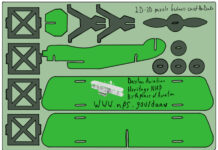Article Excerpt
Decentralization is a type of organizational structure in which daily operations and decision-making responsibilities are delegated by top management to middle and lower-level mangers. This frees up top management to focus more on major decisions.
A situation may arise where the business owner must be away from the business for an extended period time because of illness or another type of emergency. A decentralized structure provides a better chance that the organization will maintain self-sufficiency because managers and employees are accustomed to working autonomously. Give the process a test run by leaving the business for a week or two – a vacation, perhaps – and evaluating the results when you return.
A decentralized organization is able to make decisions more quickly than one with a centralized structure. A manager often can make a decision without having to wait for it to go up a chain of command, allowing the organization to react quickly to situations where fast action can mean the difference between gaining and losing a customer.
The flat line management structure offers less bureaucracy than a traditional organization hierarchy. Lower-level managers have a greater amount of decision-making authority, which enables the company to make changes quickly. This can allow the organization to respond to customer demands and changes efficiently. In a flat organization, workers have a greater ability to make decisions on the job, which can improve the efficiency of the company.
Analysis
This article describes fast action or decision making to be “the difference between gaining and losing a customer”. In a mass casualty scenario, a quick decision, or lacktherof, can mean the difference between life and death for an individual or even a group. Just as the consequences for incorrect decision is tenfold, so is the importance of a proper organizational structure in a crisis scenario. One of the biggest problems in dealing with a mass casualty situation is mass confusion, chaos, and panic. Given these conditions, communication becomes less than ideal. Especially in this extreme type of emergency, the idea of a decentralized organizational structure, becomes extremely attractive. When individuals don’t have access to the higher ups and have to make decisions with their colleagues, or even by themselves, they can be prepared to knowing that they’ve been entrusted and prepared to make these decisions ahead of time. Even when the situation changes unexpectedly, which it often does during a crisis scenario. When there’s no time to second guess, the more experience each individual has beforehand makes their decisions more informed in the moment. It’s hard to guess who will be around and ready to take action during a crisis scenario, which is why such a flexible approach that allows for improvisations is appropriate.




